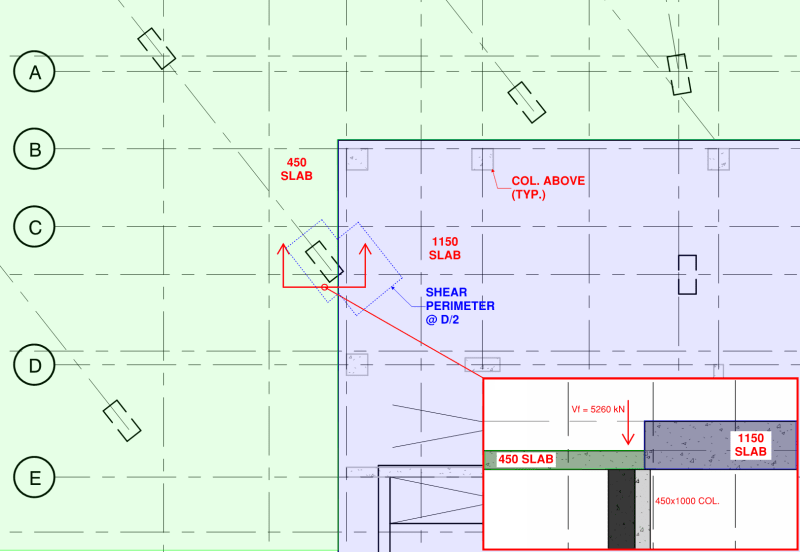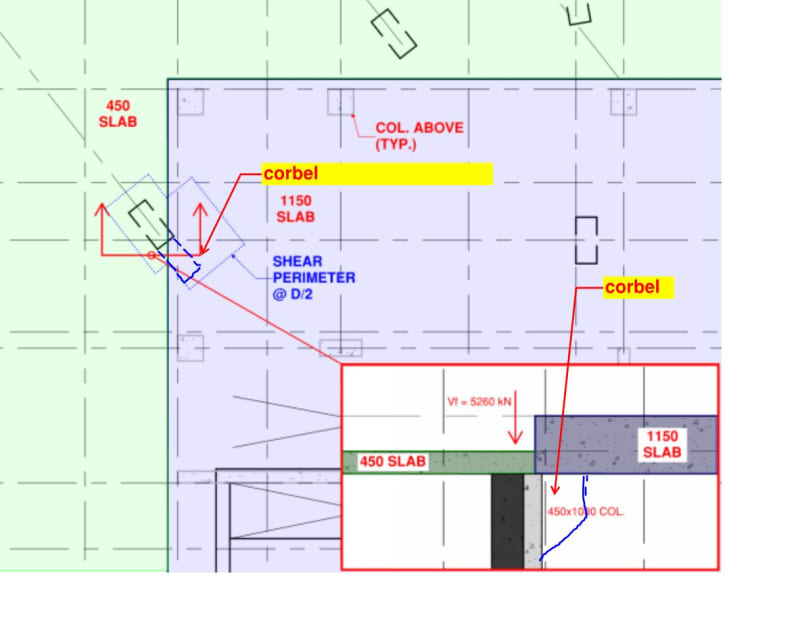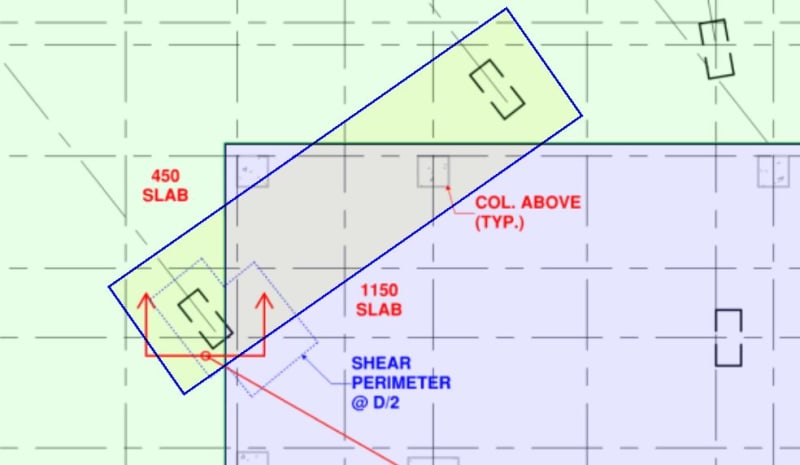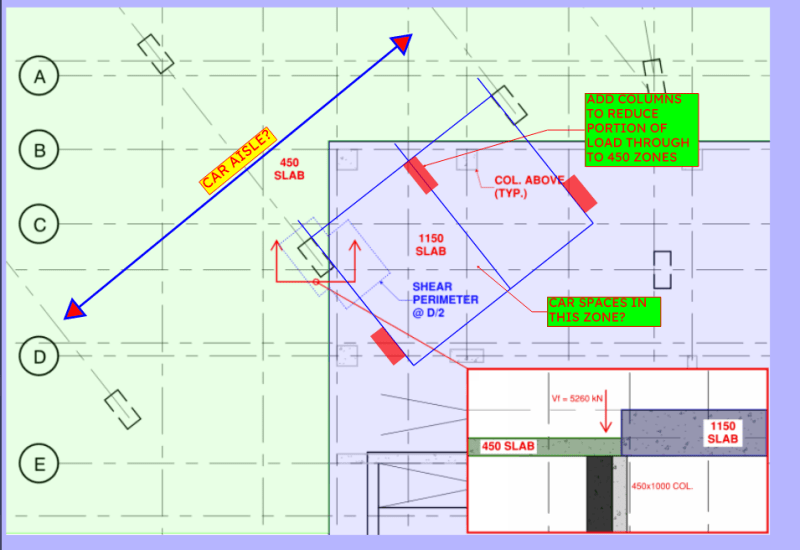Hi Everyone,
Long time lurker, first time poster. I have a scenario I would appreciate getting some opinions on. I am a Canadian structural engineer practicing primarily in the GTA (Greater Toronto Area). In return I promise to offer my opinions and advice on future threads where I think I can make valuable contributions.
I am checking punching shear in a slab at a column where the slab thickness varies within the shear perimeter. See image below. The 450 mm thick slab is a parking deck beyond the footprint of the building. The 1150 mm thick slab is a transfer slab that supports 8 storeys of cast-in-place concrete residential. The step occurs at the top of the slab - the underside of slab is flush (I have included a section). The factored punching shear load is 5260 kN. The unbalanced moments are negligible.
I have already checked assuming a 450 slab over the entire shear perimeter but, not surprisingly, was unable to get that to check out with or without shear reinforcement. My preferred punching shear reinforcement is stud rails. I'd like to take advantage of the increased shear capacity due to the presence of the 1150 slab within the shear perimeter, however I am unsure of how to quantify this in a reliable manner. Have any of you experienced a similar condition? How did you deal with it? Can I take a "weighted average" of the effective depth "d"? I appreciate any and all comments.
Additional info:
- 35 MPa concrete
- CSA A23.3-2014 concrete code
- d_(450slab) = 385 mm (effective depth)
- d_(1150slab) = 1095 mm (effective depth)
I am not looking to use any drop panels as the entire parking level is a flat plate. Moving/rotating the column may be possible but will be difficult due to layouts. I'd prefer if I can design for the current location. Reducing the load is not viable. Increasing the thickness of the 450 slab is not a great option as the rest of the parking deck slab works as a flat plate at 450 thick (deflection, flexural design, stud rails at some columns etc.).

Long time lurker, first time poster. I have a scenario I would appreciate getting some opinions on. I am a Canadian structural engineer practicing primarily in the GTA (Greater Toronto Area). In return I promise to offer my opinions and advice on future threads where I think I can make valuable contributions.
I am checking punching shear in a slab at a column where the slab thickness varies within the shear perimeter. See image below. The 450 mm thick slab is a parking deck beyond the footprint of the building. The 1150 mm thick slab is a transfer slab that supports 8 storeys of cast-in-place concrete residential. The step occurs at the top of the slab - the underside of slab is flush (I have included a section). The factored punching shear load is 5260 kN. The unbalanced moments are negligible.
I have already checked assuming a 450 slab over the entire shear perimeter but, not surprisingly, was unable to get that to check out with or without shear reinforcement. My preferred punching shear reinforcement is stud rails. I'd like to take advantage of the increased shear capacity due to the presence of the 1150 slab within the shear perimeter, however I am unsure of how to quantify this in a reliable manner. Have any of you experienced a similar condition? How did you deal with it? Can I take a "weighted average" of the effective depth "d"? I appreciate any and all comments.
Additional info:
- 35 MPa concrete
- CSA A23.3-2014 concrete code
- d_(450slab) = 385 mm (effective depth)
- d_(1150slab) = 1095 mm (effective depth)
I am not looking to use any drop panels as the entire parking level is a flat plate. Moving/rotating the column may be possible but will be difficult due to layouts. I'd prefer if I can design for the current location. Reducing the load is not viable. Increasing the thickness of the 450 slab is not a great option as the rest of the parking deck slab works as a flat plate at 450 thick (deflection, flexural design, stud rails at some columns etc.).




